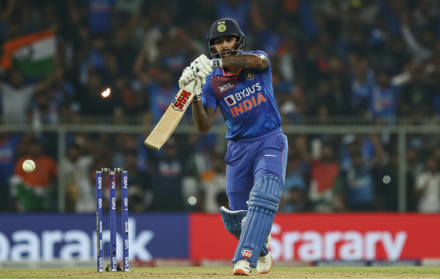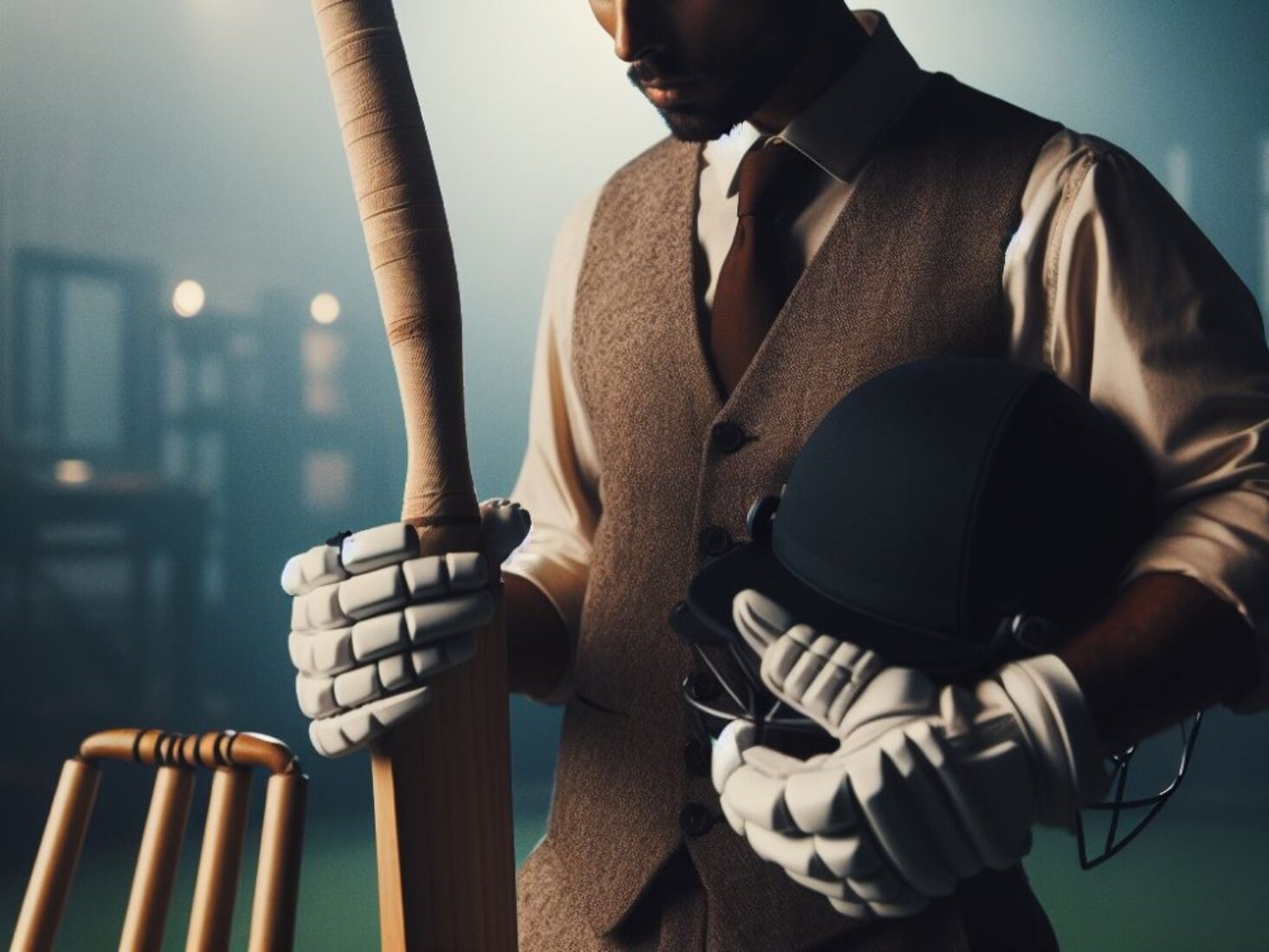
Maximizing Performance: A Guide to Cricket Equipment Maintenance
Proper cricket equipment maintenance is crucial for enhancing your performance on the field. In this comprehensive guide, we’ll explore the essential steps to keep your equipment in top condition, ensuring you’re always ready to deliver your best performance.
First and foremost, let’s talk about safeguarding your head with high-quality cricket helmets. Ensuring maximum protection while batting or fielding is paramount for every player. For insights into selecting the right helmet, check out our detailed guide on cricket helmets.
Next up, let’s delve into the backbone of cricket – the stumps. We’ll provide you with a thorough review of cricket stumps, helping you choose the best ones to withstand the rigors of the game. Find out more about cricket stumps review here.
When it comes to footwear, having the right cricket shoes can significantly impact your performance. From providing traction to supporting your feet during long matches, choosing the proper shoes is essential. Learn how to select the perfect pair by exploring our guide on choosing the right cricket shoes.
Of course, we can’t forget about the most crucial piece of equipment – the cricket bat. Selecting the right bat size is crucial for maximizing your performance at the crease. Discover the correct bat size for you by reading our guide on right cricket bat size.
Maintaining your cricket equipment is equally important for longevity and performance. Learn the best practices for keeping your gear in top shape with our comprehensive guide on how to maintain your cricket equipment.
In addition to the essentials, we’ll also cover the must-have accessories every cricket player needs. From protective gear to training aids, we’ll ensure you’re fully equipped for success on the field. Explore our guide on cricket accessories every player needs for more insights.
Lastly, we’ll help you elevate your game with recommendations for the best cricket balls, sunglasses, and training equipment. Discover the top picks to enhance your skills and performance with our guides on best cricket balls, best cricket sunglasses, and best cricket training equipment.
Get ready to take your cricket game to the next level as we dive into the world of proper cricket equipment maintenance. Let’s maximize your performance together!
Why is it Important to Keep Cricket Equipment in Prime Condition?
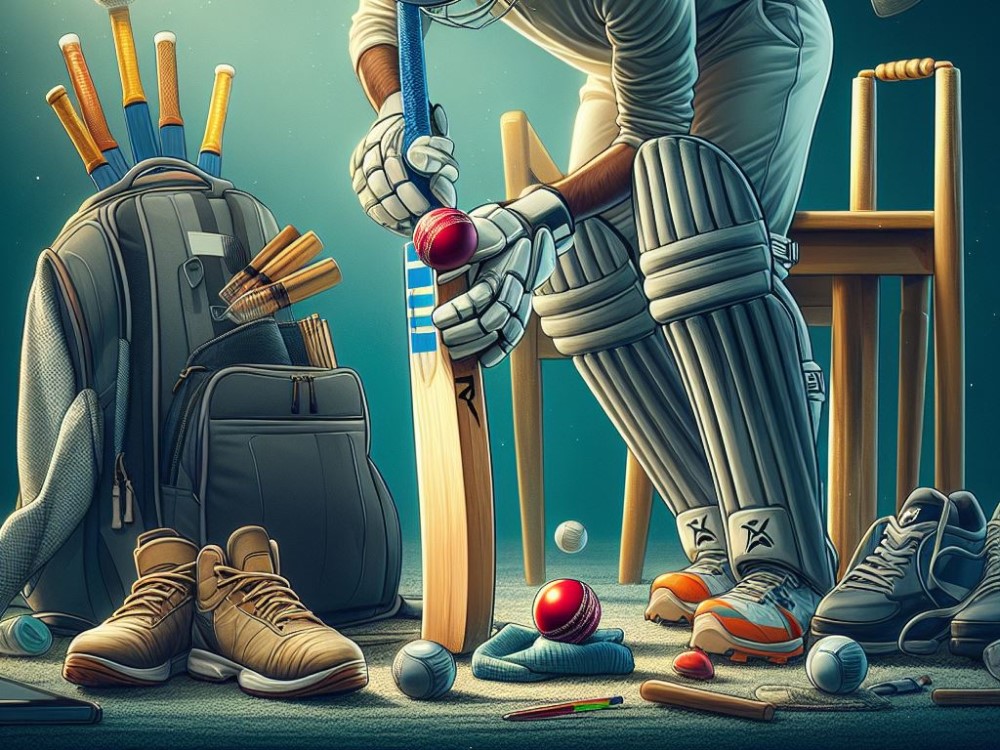
Maintaining your cricket equipment in prime condition is crucial, and here’s why. By ensuring your gear is in optimal shape, you can enhance your performance on the field and extend the lifespan of your equipment.
Discover how these two key factors play a significant role in maximizing your potential and getting the most out of your cricket gear. Don’t underestimate the impact of proper equipment care on your game and investment – it’s time to delve into the importance of keeping your cricket equipment in prime condition!
Improves Performance
To maintain and care for your cricket equipment and ensure its peak condition, it is crucial to regularly engage in proper maintenance practices. By doing so, not only do you extend the lifespan of the equipment, but you also enhance its performance when out on the field.
It is essential to clean and dry the equipment after each use, as well as store it appropriately to prevent any potential damage. Additionally, it is advisable to conduct regular inspections to identify any signs of wear and tear.
Optimizing the performance of specific cricket equipment, such as the bat, ball, gloves and pads, helmet, and shoes, requires employing specific care techniques. By doing so, you can prevent common issues that may diminish their performance.
For instance, implementing preventive measures against surface cracks on the bat, ensuring the ball’s grip and stitching remain intact, and taking steps to prevent wear and tear on gloves and pads significantly contribute to maintaining optimal performance levels.
Extends the Lifespan of Equipment
Extending the lifespan of your cricket equipment is crucial for performance and cost efficiency. Here are some tips to achieve this:
- Clean and dry your equipment after each use to prevent moisture-related damage.
- Properly store your gear in a dry place to avoid exposure to extreme temperatures or humidity.
- Regularly inspect your equipment for any signs of wear and tear, such as loose stitching or surface cracks.
- Address minor repairs promptly, such as applying a protective coating to the cricket bat or replacing worn-out toe guards.
- For bats, use a wooden mallet and apply a raw linseed oil to enhance durability and performance.
General Maintenance Tips for Cricket Equipment
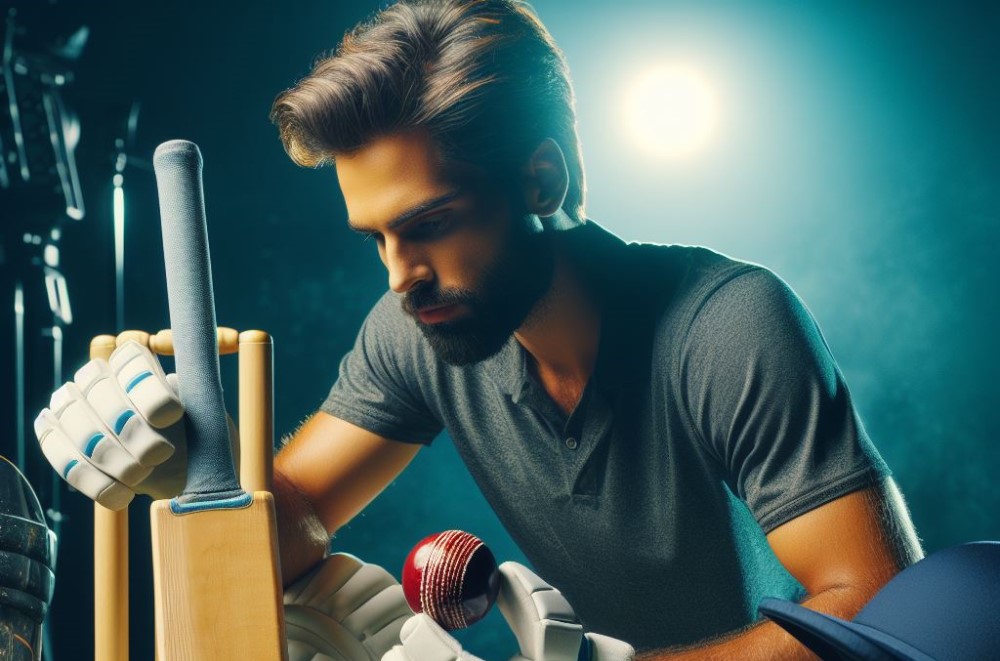
Taking good care of your cricket equipment is vital for peak performance. In this section, we’ll uncover some valuable tips to ensure your gear stays in prime condition. From cleaning and drying techniques to proper storage methods, we will equip you with the know-how to extend the lifespan of your equipment.
You’ll also learn the importance of regular inspections to catch any potential issues before they affect your game. So, let’s dive in and discover how to maintain your cricket gear like a pro!
Cleaning and Drying
- To keep your cricket equipment in prime condition, follow these steps for cleaning and drying:
- Wipe your cricket bat, ball, gloves, pads, helmet, and shoes with a clean rag to remove any dirt or debris.
- For the cricket bat, inspect for surface cracks and minor damages. If there are any, use a wooden mallet to gently knock them out.
- Apply a protective coating, such as raw linseed oil, to the cricket bat to prevent moisture absorption.
- Check the grip and stitching on the cricket ball. If they are loose or damaged, use fiberglass tape to secure them.
- Inspect the gloves and pads for any signs of wear and tear, such as loose straps or frayed edges. Make any necessary repairs or replacements.
- Clean the cricket helmet by removing the inner padding and washing it with mild soap and water. Allow it to air dry completely before reassembling.
- Clean the cricket shoes by removing any dirt or grass stuck in the spikes. Use a brush and water to remove stubborn stains.
Following these steps will help maintain the longevity and performance of your cricket equipment. Proper cleaning and drying will prevent damage and ensure optimal play.
Proper Storage
- Proper storage of cricket equipment is crucial for maintaining its quality and ensuring longevity. Here are some valuable tips for effectively storing your cricket gear:
- Thoroughly clean and dry your equipment before placing it in storage to prevent the growth of mold and mildew.
- To maintain its shape and prevent warping, store your cricket bat in a cool and dry location.
- Shield your bat from dust, moisture, and sunlight by using a protective cover or bag.
- Preserve the shape and stitching of your cricket ball by storing it in a dry container.
- Prevent odors and moisture buildup by keeping your gloves and pads in a well-ventilated area.
- Hang your cricket helmet on a hook to both maintain its shape and protect it from any potential damage.
- When storing your cricket shoes, ensure they are placed in a cool and dry place, away from direct sunlight.
Regular Inspections
- Regular inspections are vital for maintaining your cricket equipment in excellent condition. Follow these steps:
- Check the cricket bat regularly for any surface cracks or splintering.
- Inspect the cricket ball frequently to detect any loss of grip or stitching.
- Examine the cricket gloves and pads regularly to identify signs of wear and tear.
- Regularly check the cricket helmet for any damage or degradation.
- Inspect the cricket shoes at regular intervals for any torn or worn-out soles.
By conducting regular inspections, you can promptly identify any potential issues and take the necessary steps to address them. This practice will help prolong the lifespan of your equipment and ensure optimal condition for improved performance.
Remember to address minor repairs promptly and use appropriate protective measures to prevent further damage. By taking proper care of your cricket equipment, you can enjoy the game with confidence and peace of mind.
How to Care for Specific Cricket Equipment
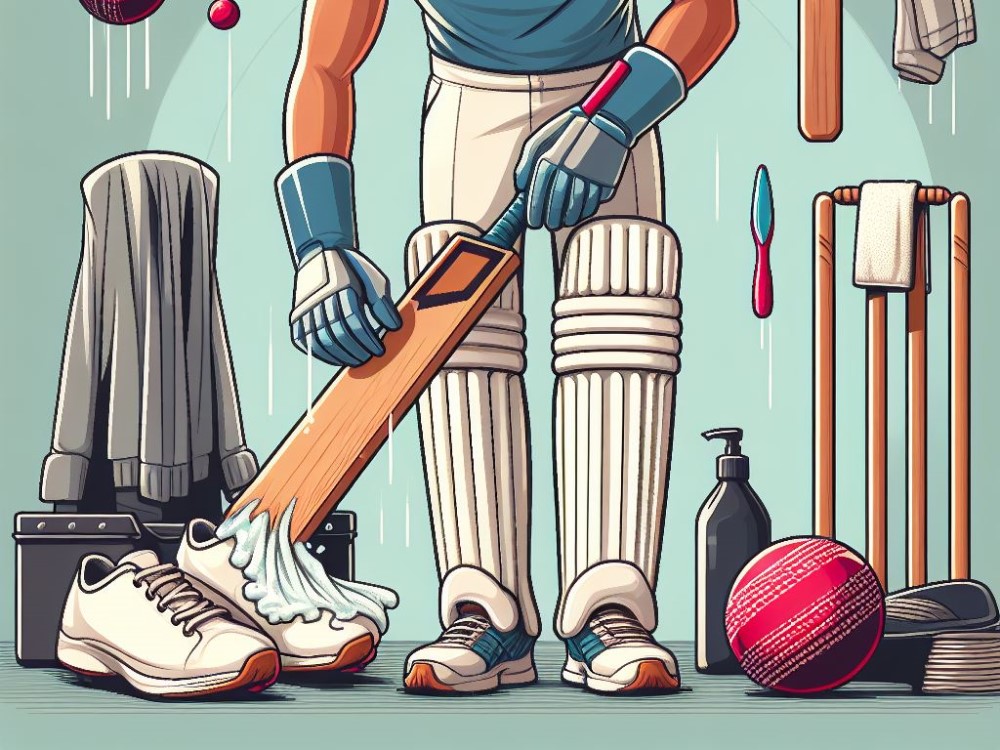
Keep your cricket equipment in top-notch shape with our expert tips on caring for specific gear. From your cricket bat to the cricket ball, gloves and pads, helmet, and shoes, we’ll provide valuable insights on how to maintain and extend the lifespan of each essential piece.
Discover the best practices, handy tricks, and must-know dos and don’ts to ensure your cricket equipment remains in prime condition, maximizing performance and enjoyment on the field.
Cricket Bat
A well-maintained cricket bat is essential for optimal performance on the field. Taking proper care and maintenance of the cricket bat not only prolongs its lifespan but also enhances grip, power, and balance. Here are some valuable maintenance tips to ensure your cricket bat stays in top condition:
1. Cleanliness: Regularly clean the cricket bat using a clean rag to remove dirt and debris.
2. Surface cracks: Inspect the cricket bat for any surface cracks and promptly repair them using fiberglass tape.
3. Protective coating: Apply a thin layer of raw linseed oil on the cricket bat to protect the wood from moisture and prevent damage.
4. Toe guard: Attach toe guards to the cricket bat to prevent damage to the bottom edge and enhance its durability.
5. Handle: Regularly check the cricket bat handle for any signs of looseness or compromises and consult professionals for repair if necessary.
Cricket Ball
- Maintaining a cricket ball: A cricket ball is a vital component of the game and must undergo regular cleaning, inspections, and addressing common issues to ensure its performance and longevity.
- Cleaning and Drying: Proper maintenance of the cricket ball involves removing dirt and moisture with a clean rag, ensuring the ball is completely dry before storage.
- Proper Storage: To prevent damage, it is important to store the cricket ball in a cool, dry place, away from extreme temperatures.
- Regular Inspections: Frequent inspections should be conducted to check for any signs of wear and tear on the cricket ball, such as loose stitching or damage to the surface.
- Addressing Issues: If there are minor repairs needed, the cricket ball can be fixed by using fiberglass tape or re-stitching. Additionally, applying a protective coating can help prevent further damage.
Maintaining the cricket ball ensures optimal playing conditions and reduces the risk of injury. Fun fact: Did you know that a cricket ball can reach speeds of up to 100 miles per hour when bowled by a professional fast bowler?
Cricket Gloves and Pads
Cricket gloves and pads are indispensable for safeguarding your hands and legs while playing cricket. To maintain their optimal condition, adhere to these essential guidelines:
- Cleaning: Cleanse them after each use by wiping them down with a fresh cloth to eliminate dirt and sweat.
- Drying: Prior to storage, ensure complete air drying to prevent the formation of mildew and unpleasant odors.
- Inspecting: Conduct regular inspections to identify any signs of damage or wear and tear.
- Minor Repairs: Use fiberglass tape to mend loose stitching or straps, or seek professional assistance for repairs.
- Protective Coating: Enhance durability and water resistance by applying a layer of raw linseed oil.
By following these steps, you can prolong the lifespan of your cricket gloves and pads, ensuring they deliver exceptional protection and comfort during every game.
Cricket Helmet
- Regular cleaning: Wipe the cricket helmet with a clean rag to remove dirt and sweat buildup.
- Inspections: Check for any cracks or damages in the cricket helmet to ensure its structural integrity.
- Adjustments: Make sure the straps and fittings of the cricket helmet are secure and in good working condition.
- Storage: Store the cricket helmet in a cool, dry place to prevent any moisture damage.
- Replacement: If the cricket helmet is damaged or shows signs of wear and tear, consider replacing it to ensure optimal safety.
By following these steps, you can ensure that your cricket helmet remains in excellent condition, providing you with the necessary protection during your games.
Cricket Shoes
Cricket shoes play a crucial role in a cricketer’s equipment, offering necessary traction, support, and protection while on the field. To maintain these essential pieces, here are some key tips:
- Regularly clean your cricket shoes with a damp cloth to remove dirt and debris.
- After each use, allow them to air dry naturally, preventing the buildup of moisture.
- To avoid the formation of mold or mildew, store your cricket shoes in a cool and dry place.
- Consistently inspect your cricket shoes for any indications of wear and tear, like loose stitching or damaged soles.
- If you come across minor damages such as loose soles, consult a professional cobbler for repair assistance.
During the early days of cricket, players had to rely on playing barefoot or wearing regular shoes as specialized cricket shoes did not exist. It wasn’t until the 18th century that cricket shoes with spikes were introduced, greatly improving grip on the pitch.
With technological advancements, cricket shoes have undergone significant development in design and materials, ultimately amplifying players’ performance and safety.
Cricket Equipment Maintenance: Preventing Common Issues
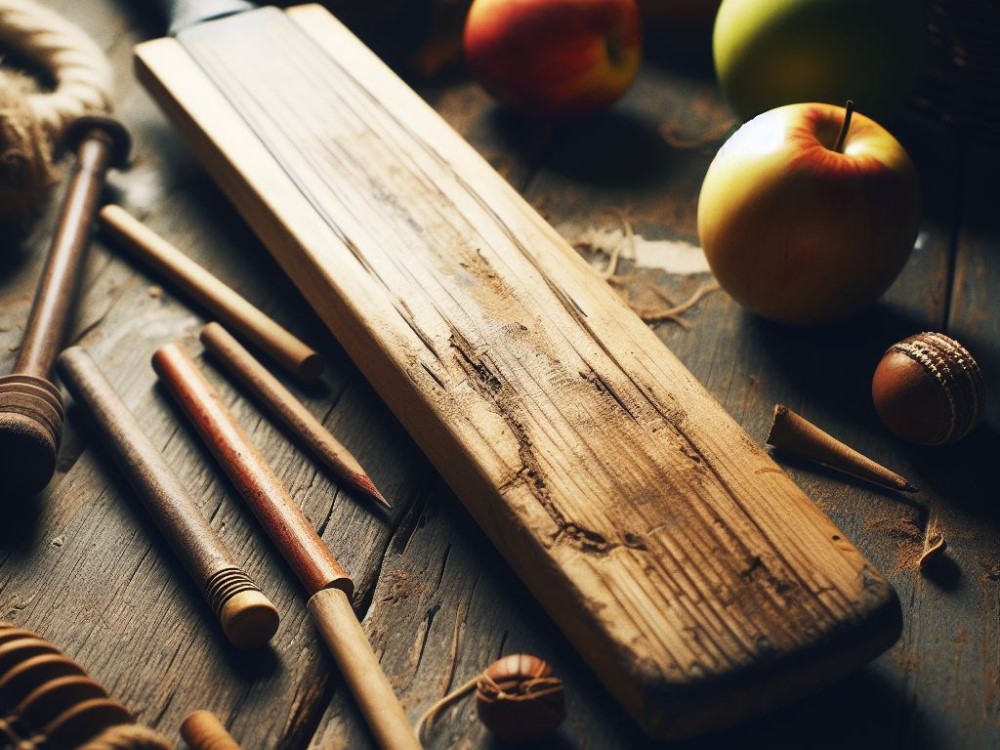
Looking to keep your cricket equipment in top-notch shape? In this section, we’ll tackle common issues that arise with cricket gear. From cracks on the cricket bat to worn-out soles on cricket shoes, we’ve got you covered.
Learn how to prevent these problems and ensure your equipment lasts longer, enhancing your performance on the field. So, grab your pads and let’s dive into the world of cricket equipment maintenance!
Cracks or Splintering on Cricket Bat
Cracks or splintering on a cricket bat can have a significant impact on its performance and longevity. To prevent and address this issue, here are some helpful tips:
- Regular inspections: Always check the bat before and after each use for any signs of cracks or splintering.
- Protective coating: Apply a layer of oil or wax regularly to protect the bat from moisture absorption and reduce the risk of cracks.
- Minor repairs: If you notice any minor cracks or splinters, promptly address them by using fiberglass tape or epoxy glue.
- Refurbished cricket bat: In case the bat has extensive damage, it might require professional refurbishment to maintain its structural integrity.
- Knocking-in process: Before using the bat, properly knock it in to strengthen the surface and minimize the occurrence of cracks.
By following these practices, you can ensure that your cricket bat remains in optimal condition for a longer period, preserving its quality and performance.
Loss of Grip or Stitching on Cricket Ball
Loss of grip or stitching on a cricket ball can have a significant impact on its performance and durability. To address this issue:
- Repair the stitching: Use strong thread and a needle to sew any loose or broken stitches.
- Regrip the ball: Apply a grip-enhancing product, like a gripping spray or grip powder, to improve traction.
- Replace the ball: If the loss of grip is severe or the stitching is beyond repair, it’s best to replace the ball for optimal gameplay.
Fun Fact: The stitching on a cricket ball is traditionally red or white and is done by hand using waxed thread.
Wear and Tear on Gloves and Pads
Cricket gloves and pads are susceptible to wear and tear due to consistent use on the field. To maintain their optimal condition, here’s how you can take care of them:
- Regular cleaning: Utilize a clean cloth to eliminate any dirt or debris from the surface of the gloves and pads.
- Inspect for damages: Take a look for any loose stitching, tears, or worn-out padding. It’s crucial to address these issues promptly.
- Storage: Ensure you store the gloves and pads in a dry and well-ventilated area to prevent moisture accumulation and the growth of mold.
- Proper drying: After each use, allow the gloves and pads to completely air dry before storing them.
- Use protective covers: Consider investing in protective covers or bags to safeguard the gloves and pads from external damage when they are not in use.
By following these steps, you can extend the lifespan of your cricket gloves and pads, guaranteeing they remain in optimal condition for every game.Damage or Degradation of HelmetIn order to protect your helmet and ensure its effectiveness and safety during cricket games, it is crucial to take certain precautions. Here are some tips that will help you prevent any damage or degradation to your helmet:
- Regular Inspections: It is important to regularly inspect your helmet for any cracks, dents, or loose parts. If you happen to notice any damage, it is essential to take immediate action.
- Proper Cleaning: After each use, make sure to clean your helmet with a clean rag and mild soap. This will effectively remove dirt and sweat, keeping your helmet in good condition.
- Storage: Your helmet should be stored in a cool and dry place, away from direct sunlight or extreme temperatures. This will prevent any potential damage caused by environmental factors.
- Maintenance: Applying a protective coating on the exterior of your helmet can help prevent scratches and maintain its overall appearance. This step is important for ensuring the longevity of your helmet.
- Replacement Parts: It is advisable to replace any worn-out padding, screws, or straps on your helmet. This will ensure a snug and secure fit, providing maximum protection.
Pro-tip: It is recommended to periodically consult with a cricket equipment specialist for a thorough inspection and maintenance of your helmet. This will help ensure its longevity and continue providing the necessary protection.
Torn or Worn-out Soles on Cricket Shoes
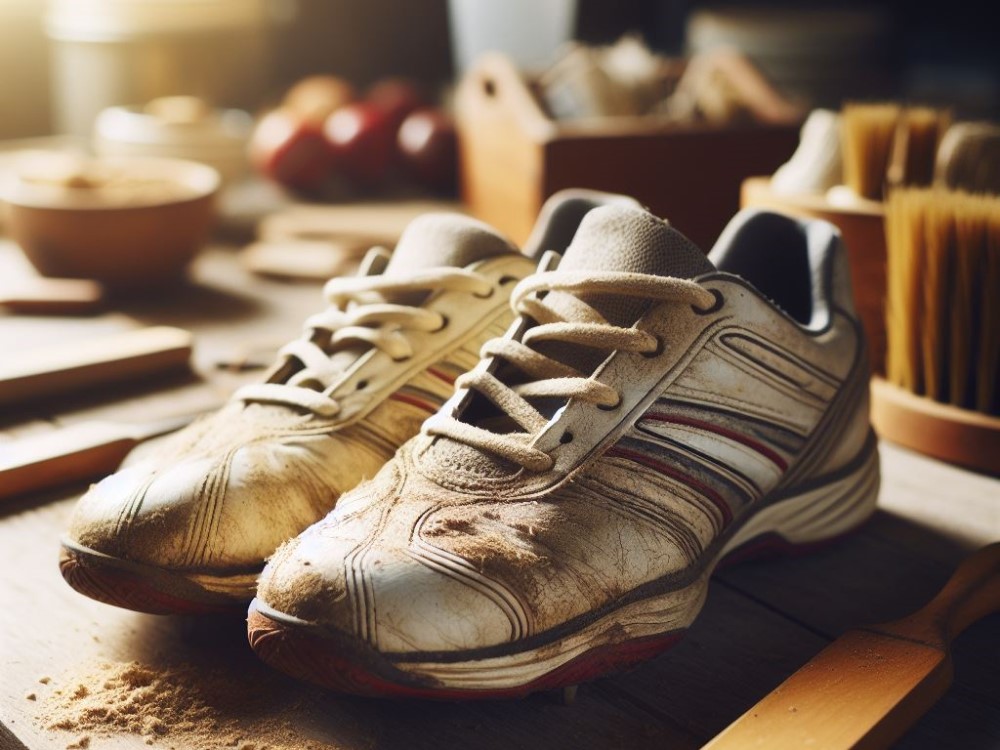
Torn or worn-out soles on cricket shoes can significantly impact your performance on the field. To ensure your cricket shoes remain in prime condition, follow these steps:
- Regularly inspect the soles for any signs of wear or tear.
- If you notice any damage, promptly replace the soles to maintain proper grip and stability.
- Consider using toe guards to protect the front of the shoe, as this area is prone to wear.
- Keep your shoes clean by wiping them with a clean rag after each use.
- Avoid exposing your shoes to extreme heat or moisture, as it may damage the soles.
- Store your shoes in a dry and well-ventilated area to prevent the growth of mold and mildew.




